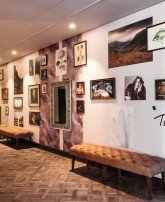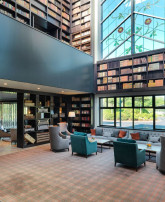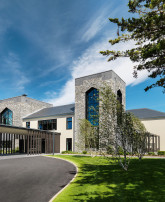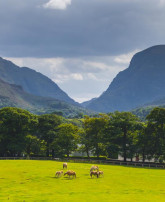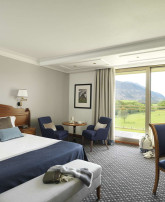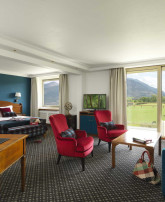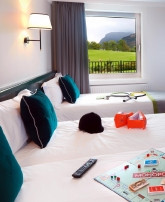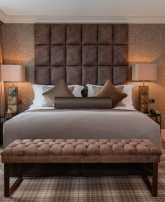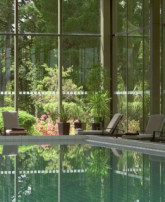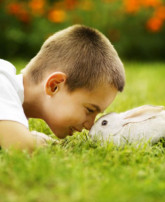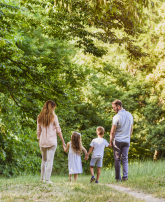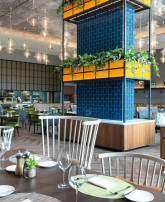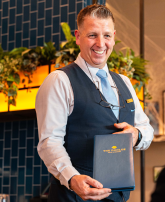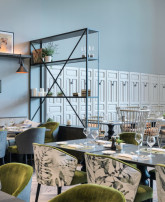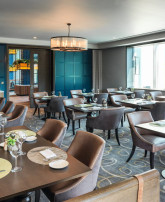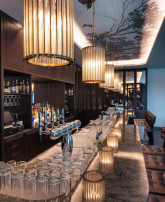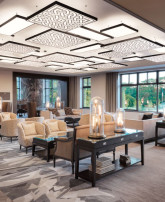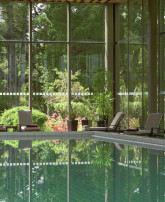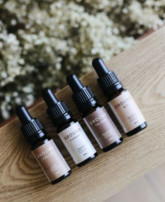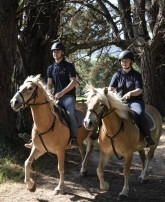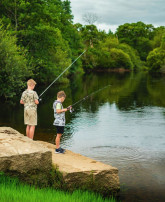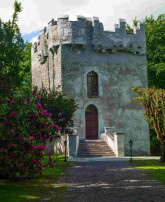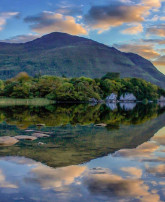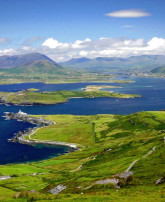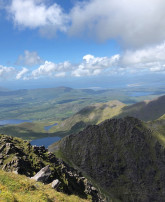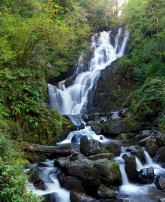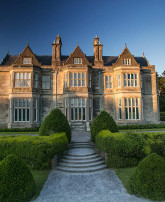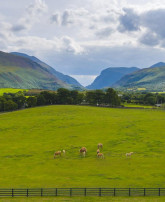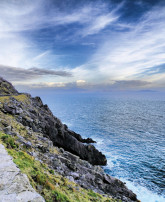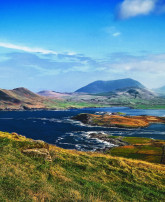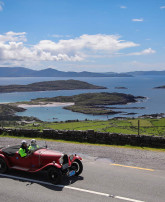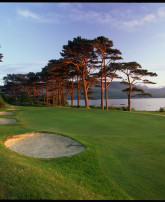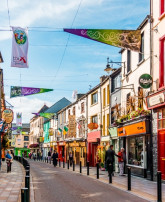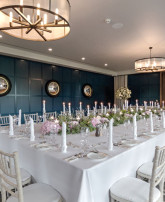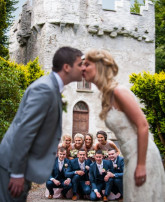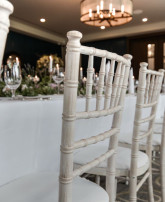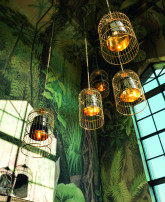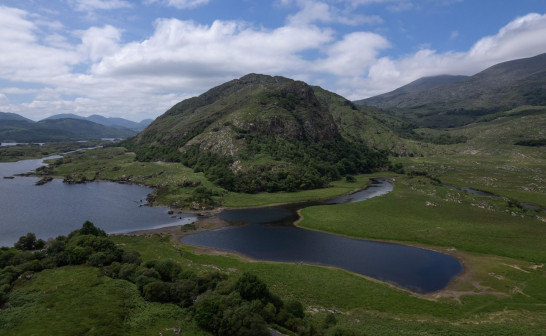
Five reasons to travel the Ring of Kerry
Posted: 24 April 2013
The Ring of Kerry has been attracting visitors to this wonderful corner of the far south-west of Ireland for hundreds of years and it is an ideal area for family breaks. The Ring itself is a circular route that takes in some of the country’s best scenery – brooding mountains, rugged coasts and some of Ireland’s finest historical buildings and heritage attractions.
There are numerous reasons to visit the Ring of Kerry. It’s a paradise for outdoor activities, including walking, fishing, golf, climbing and surfing. Nature lovers can see Ireland’s first ever national park – the Kerry Lakes – with some rare and beautiful residents. It’s a rich agricultural area with the Atlantic coast never far away, so the cuisine is fantastic. And, although it’s the second most visited attraction in Ireland outside Dublin, the Ring of Kerry has maintained a slower, more traditional way of life, it is the real Ireland.
Here are just five highlights that you must see as you travel in and around the Ring of Kerry.
1 - The Gap of Dunloe
Though slightly off of the Ring of Kerry route, this scenic spot is still certainly worth a visit. The Gap is a narrow pass between Ireland’s highest mountain range, Macgillycuddy's Reeks, and the Purple Mountain and is one of Kerry’s most popular visitor attractions.
While the streams that flow through the Gap are small, the seemingly dislocated boulders, which divert the single lane road, are huge. That’s because they were brought here by the massive glaciers that carved this wonderful landscape.
It is a stunningly beautiful sight in its own right – you can see it as a location in The Crying Game - and many who do visit come just to look. The Gap itself is around 11km long and contains five lakes through which the River Loe runs, connecting, Black Lough, Auger Lake, Cushnavally Lake, Black Lake and Coosaun Lough from north to south. Between Coousaun Lough and Black Lake is the Wishing Bridge, which is said to grant the wishes of those who cross it.
The road through the Gap is the traditional way to see this iconic site and the best way to take the trip is by Jaunting Car, as the little pony traps are called. Most are driven by families who have been in the business for generations and know the ways of The Turn, the cab rank system that decides who rides next.
Visitors that are more active can of course walk, using the Gap as a highpoint on many trails through the Reeks. Cyclists tend to rent their machines in Killarney, although it’s a mountain pass the 200-metre vertical rise over 11km isn’t too demanding for such a spectacular ride.
The cliffs, which tower up from the Gap, are great for climbing, and attract a good crowd of rock climbers in the summer months.
In high season, the Gap can be busy; it’s why the road is closed in summer, so arriving early or late is more likely to get you some of the seclusion that people seek in this part of the world.
Black Valley has a backpacker’s hostel and Kate Kearney’s Cottage is a famous pub that’s well known for its good food. If you’re in the mood for something more luxurious, then try The Dunloe (perhaps hyperlink?), one of Ireland’s top luxury hotels in its own grounds and with great views over the Gap.
2 – The Ladies View
The name of Ladies View is a reminder that the Ring of Kerry has been attracting visitors since long before the birth of the modern tourist industry. When Queen Victoria visited Kerry – then a corner of her empire – in 1861, her ladies in waiting were said to be particularly enamoured of this famous panorama, which overlooks the equally famous Lakes of Killarney.
It’s still a quite isolated place, but there is now a gift shop, café and bar, so you can enjoy something to eat or drink and shelter from the sometimes-inclement west of Ireland weather.
The lakes over which the View commands such famous view are Lough Leane, the largest and lowest of the three, above which are Muckross Lake (sometimes called Middle Lake) and the Upper Lake.
Lough Leane, beyond which lies Killarney, is called the Lake of Learning and is a magical, mysterious place. On one of its islands, Innisfallen, once stood a monastery which may have educated the famous Irish hero king Brian Boru. The old ruin of the monastery can be still visited by renting a boat from Ross Castle. This castle is more recent (built in the late 15th century), sitting on Ross Island (in reality a peninsula) within the lake, it’s an impressive clan stronghold. Both should be on your itinerary, and boat trips from Ross Castle are easily arranged.
Anglers will find good trout fishing in all the lakes.
3 – Muckross House
Muckross House sits on Muckross Peninsula between Muckross Lake and Lough Leane, two of the famous Killarney Lakes.
The house was built for local magnate Henry Arthur Herbert in 1843. He lived there with his wife, Mary, who as a watercolourist had some of the best landscapes in Europe on her doorsteps.
It’s a Tudor style mansion and an established visiting point since it was built to the designs of William Burn. When Queen Victoria came to Kerry in 1861, she needed somewhere grand to visit and it’s thought that the money lavished on the property (during the decade before the visit actually happened) is one of the reasons the Herbert family had to sell their beloved home.
The Guinness family bought it next and it was even given as a wedding present by one American millionaire. When the estate was handed to the Republic in 1932, it formed the basis of the country’s first national park, Killarney National Park, so important was its natural beauty.
Now, the house and gardens – to which much of that ill-fated improvement work was devoted – is an important tourist attraction.
It boasts one of the best-preserved Victorian homes in Ireland, beautifully furnished as a country estate for the elite. There is also a traditional farm, based on 1930s and 40s agriculture, on the estate as well as Margaret Phelan’s famous pottery and a traditional weavers craft business producing modern and stylish clothes and accessories in the time-honoured way.
4 - Skellig Michael
If the land of Kerry is dominated by its mountains and lakes, then the wild Atlantic has also played its part in shaping the life of this area and Skellig Michael – also Great Skellig – is a Unesco World Heritage Site.
Skellig Michael, the largest of the pair of Skellig islands, is probably the most spectacular of the Atlantic islands on the Ring of Kerry, sitting some 11km into the Atlantic from the Iveragh Peninsula. It’s a worthy trip even if you don’t want to step off the mainland.
The chief attraction of the island is its world-famous monastery. Before the eighth century or earlier, the island was almost certainly uninhabited, but its story is part of the very fabric of Irish nationhood. According to legend, Ir, the son of Milesius, the mythical ancestor of all the Irish, is buried here.
There was a monastery on the island almost certainly from the eighth century, but it may be a couple of centuries older. By 1044, it was known to be dedicated to St Michael.
The monks managed to hang on against worsening weather conditions until the 13th century, when they abandoned their inhospitable home. The island was sold into private ownership in the 19th century and then bought for the nation so that the two lighthouses could be built to protect shipping heading for Dublin.
The Unesco honour was given in 1996, because of the age and cultural importance of the long-abandoned but beautifully preserved monastery, which tells the story of a lost tradition of harsh, ascetic living in the name of Christ. The beehive shaped monks’ cells are particularly famed.
You can only visit the island between April and October and the boat trip can be rough, but it’s one that’s well worth making.
5 - Kenmare and the Lace Industry
The Ring contains many towns that are worthy of a day’s visit, but Kenmare is particularly rich in history.
Its name means, the little nest, or head of the sea, which aptly describe this small town with its spectacular setting, nestling in the mountains on the shores of the Atlantic, on both the Ring of Kerry and Ring of Beara tourist trails.
It was founded in 1678, and is now celebrated by the nation’s tourist authority as a heritage town, set in its own bay and attracting visitors from around the world.
Because of its coastal location, it’s warmer than it should be and is rightly proud of its seafood.
All the activities that attract people to Kerry are easily accessible from the town – water sports, mountain pursuits, walking, eating, golf, traditional music.
That the area is one of the cradles of Irish civilisation can be seen in the nearby archaeological park and one of Ireland’s largest stone circles close to the town.
More recently, the Poor Clare Sisters, founded a convent here and the lace making that they introduced make Kenmare world famous.
That industry is still celebrated and is one of the chief reasons to visit the town. The Kenmare Lace and Design Centre is a wonderful way to learn about the beautiful and intricate needlepoint lace craft, watch it being made and find a delightful souvenir of your visit to the Ring of Kerry.
There are many reasons to visit the Ring of Kerry, many visitors come back year after year to discover more of the landscapes, the people, the food and the fun that make this the best place to discover the real Ireland.

